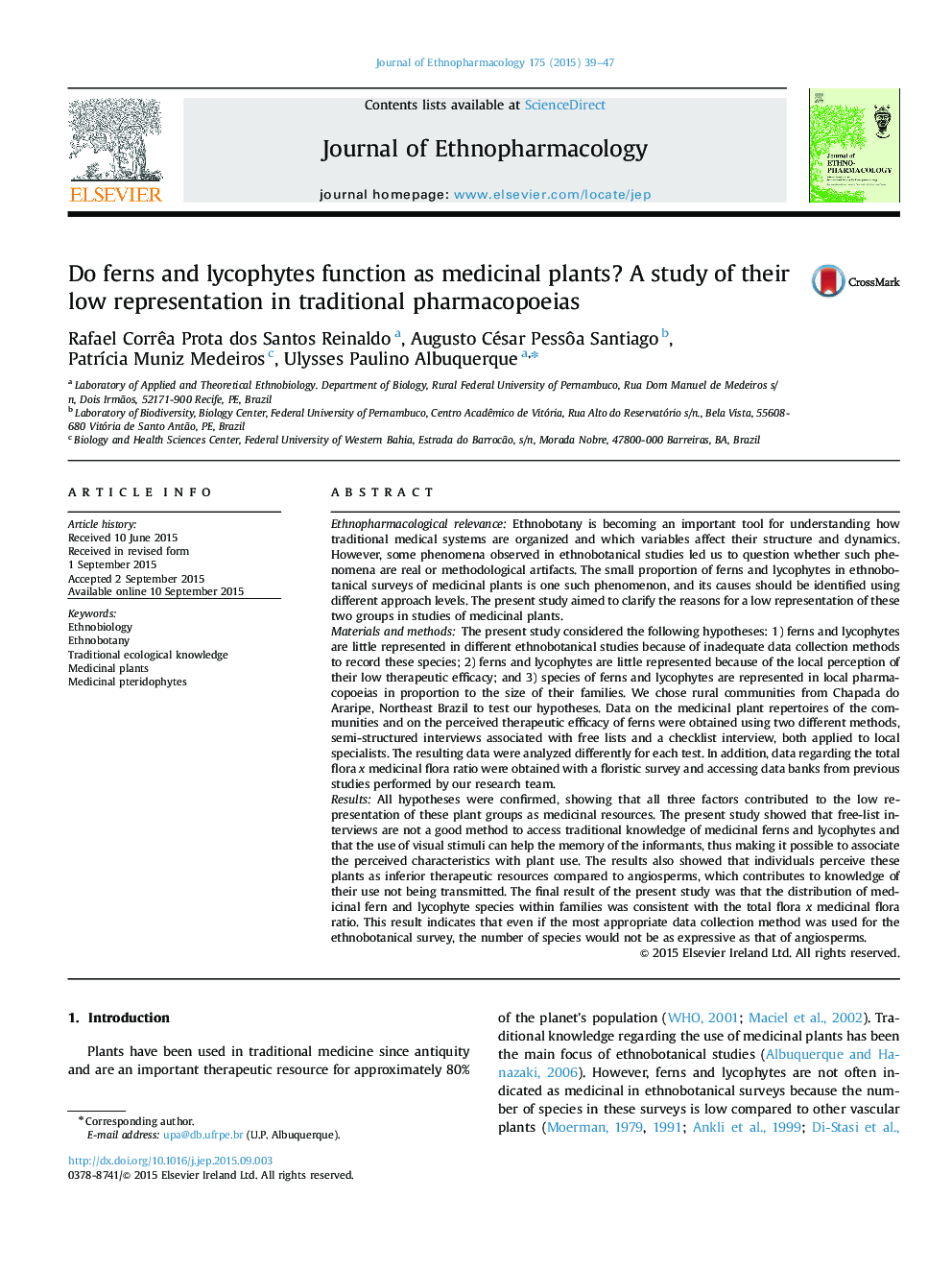| کد مقاله | کد نشریه | سال انتشار | مقاله انگلیسی | نسخه تمام متن |
|---|---|---|---|---|
| 2544904 | 1560387 | 2015 | 9 صفحه PDF | دانلود رایگان |
Ethnopharmacological relevanceEthnobotany is becoming an important tool for understanding how traditional medical systems are organized and which variables affect their structure and dynamics. However, some phenomena observed in ethnobotanical studies led us to question whether such phenomena are real or methodological artifacts. The small proportion of ferns and lycophytes in ethnobotanical surveys of medicinal plants is one such phenomenon, and its causes should be identified using different approach levels. The present study aimed to clarify the reasons for a low representation of these two groups in studies of medicinal plants.Materials and methodsThe present study considered the following hypotheses: 1) ferns and lycophytes are little represented in different ethnobotanical studies because of inadequate data collection methods to record these species; 2) ferns and lycophytes are little represented because of the local perception of their low therapeutic efficacy; and 3) species of ferns and lycophytes are represented in local pharmacopoeias in proportion to the size of their families. We chose rural communities from Chapada do Araripe, Northeast Brazil to test our hypotheses. Data on the medicinal plant repertoires of the communities and on the perceived therapeutic efficacy of ferns were obtained using two different methods, semi-structured interviews associated with free lists and a checklist interview, both applied to local specialists. The resulting data were analyzed differently for each test. In addition, data regarding the total flora x medicinal flora ratio were obtained with a floristic survey and accessing data banks from previous studies performed by our research team.ResultsAll hypotheses were confirmed, showing that all three factors contributed to the low representation of these plant groups as medicinal resources. The present study showed that free-list interviews are not a good method to access traditional knowledge of medicinal ferns and lycophytes and that the use of visual stimuli can help the memory of the informants, thus making it possible to associate the perceived characteristics with plant use. The results also showed that individuals perceive these plants as inferior therapeutic resources compared to angiosperms, which contributes to knowledge of their use not being transmitted. The final result of the present study was that the distribution of medicinal fern and lycophyte species within families was consistent with the total flora x medicinal flora ratio. This result indicates that even if the most appropriate data collection method was used for the ethnobotanical survey, the number of species would not be as expressive as that of angiosperms.
Figure optionsDownload high-quality image (89 K)Download as PowerPoint slide
Journal: Journal of Ethnopharmacology - Volume 175, 4 December 2015, Pages 39–47
